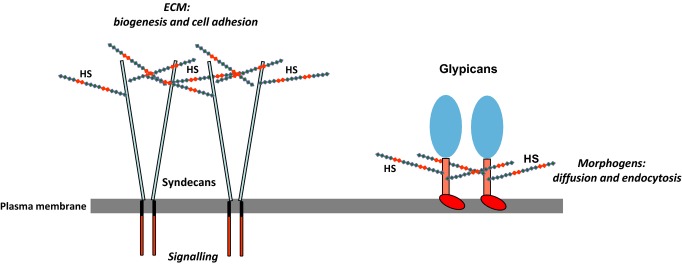Figure 1.

Cell surface heparan sulphate proteoglycans (HSPGs). The major cell surface HSPGs are the transmembrane syndecans and the GPI-anchored glypicans. The syndecans are constitutive dimers and play key roles in matrix biogenesis, cell adhesion to the extracellular matrix (ECM) and transmission of matrix-derived signals to the cell interior. The glypicans regulate morphogen gradients, signalling and the endocytosis of morphogen receptor complexes; these glypican-related specializations may be facilitated by the close proximity of the heparan sulphate (HS) chains to the cell surface. Both HSPG families are probably involved in binding and activating the many growth factors that utilize an HS co-receptor.
